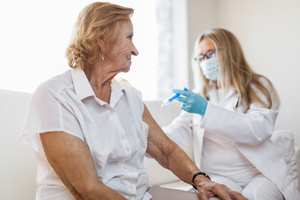Glucose test near me
in Aldrich, MO
Own a clinic? Add your location.
Help patients book appointments with you on Solv. It's free!
2 instant-book locations

Quest Diagnostics
Quest Diagnostics
Self-pay pricing
Clear self-pay prices
No more surprise bills. Solv is committed to making getting healthcare as easy as buying groceries at the store, including knowing the price of care upfront.

Self-pay pricing
Clear self-pay prices
No more surprise bills. Solv is committed to making getting healthcare as easy as buying groceries at the store, including knowing the price of care upfront.
Stockton Lake Walk-in & Primary Care
Stockton Lake Walk-in & Primary Care

Walmart, Supercenter
Walmart
Northside Urgent Care
Northside Urgent Care
DaVita Springfield North
DaVita Springfield North
Missouri OnSite Testing
Missouri OnSite Testing
KT Health Clinic
KT Health Clinic
Chestnut Labs
Chestnut Labs
Greenwood Laboratory School
Greenwood Laboratory School
Chestnut Lab
Chestnut Lab

Consulting Analytical Services International
Consulting Analytical Services International
Insurance Physicals and Employee Screening
Insurance Physicals and Employee Screening
Family Medical Walk-In Clinics
Family Medical Walk-In Clinics

Walmart, Supercenter
Walmart
Mercy Urgent Care, Smith Glynn Callaway
Mercy Urgent Care
Family Medical Walk-in Clinic
Family Medical Walk-in Clinic
CoxHealth Urgent Care Plus
CoxHealth Urgent Care Plus

CVS MinuteClinic, CVS MinuteClinic
CVS MinuteClinic
Own a clinic? Add your location.
Help patients book appointments with you on Solv. It's free!
Aldrich Glucose Tests
Diabetes is a life-threatening disease that affects 32 million individuals in the US. Because diabetes doesn't always manifest itself as symptoms, especially in its early stages, it's vital to have your blood glucose levels examined if you're at risk.
Patients aged 45 and over should get their glucose levels checked once a year, according to the American Diabetes Association. If you're under 45 and have a lot of risk factors, you should be checked. Obesity, having a diabetic close family member, and being physically active less than three times a week are all risk factors for diabetes. Having gestational diabetes or prediabetes raises your chances of developing diabetes later in life. African Americans, Latinos, and American Indians, for example, have a higher risk of diabetes than other ethnic groups.
Pregnant women with type 2 diabetes risk factors should be tested for gestational diabetes during the first trimester. Being overweight, over 35, having a history of gestational diabetes, or belonging to an ethnic group with a high diabetes risk are all risk factors. If diabetes is not controlled during pregnancy, it can cause complications such as hypertension, cesarean birth, and even infant mortality.
Prediabetes occurs when blood sugar levels are higher than usual but not high enough to be categorized as diabetes. One out of every three people in the United States has prediabetes, according to the Centers for Disease Control and Prevention, and many of them are unaware of it. If left untreated, many people with prediabetes will develop type 2 diabetes within ten years. Prediabetes, on the other hand, is reversible by dietary and lifestyle changes. Blood sugar control can be achieved by eating a good diet and exercising regularly. Start reducing weight right immediately if you're overweight. Consume plenty of fruits and vegetables while avoiding refined carbohydrates and sweets.
Glucose Test FAQs
How much does a glucose test cost in Aldrich?
The cost of a blood glucose test is determined by a number of factors, including the test's location and type. A glucose test will set you back around $10. Ask your doctor's office when you arrange your appointment if you have any questions about the type of test you'll need or how much it'll cost.
Does insurance cover glucose testing in Aldrich?
Many health insurance companies fund glucose testing, but there are certain restrictions. Your insurer may cover a glucose test once or twice a year, for example. Contact your insurance carrier or look up your policy documentation on their website if you have any queries about what your insurance plan covers.
What is glucose in a blood test?
Glucose is a type of sugar found in human and animal blood that acts as one of the body's principal fuel sources. Glucose is obtained from the food you eat, or it can be produced by your body from other sources if necessary. After you eat, glucose is released into your bloodstream and circulated throughout your body. Insulin is a hormone that helps glucose get into cells so that it may be used for energy.
What is a glucose test?
A glucose test is a simple blood test that determines how much glucose is present in your body. Too much or too little glucose in the blood might cause medical issues and signal a more serious condition. Hyperglycemia, or high blood glucose levels, can be a sign of diabetes, which is linked to heart disease, stroke, kidney illness, eye problems, skin diseases, sluggish wound healing, and other complications.
How long should I fast before a glucose test?
Before a glucose test, you should fast for at least eight hours. If you eat or drink anything before a glucose test, your blood sugar will be higher, and the result may not be accurate. Before a glucose test, you can drink water but not anything else. It's best to schedule your appointment early in the morning so that you don't go hungry for the rest of the day.
How do I read glucose test results?
The concentration of glucose in the blood is expressed in milligrams per deciliter, or mg/dL, a measuring unit. A fasting glucose test's normal range is 70 to 99 mg/dL. Prediabetes can be discovered when blood sugar levels are between 100 and 125 mg/dL. If your fasting blood glucose level is greater than 125 mg/dL, you may have diabetes.
How long does it take to get glucose test results in Aldrich?
Depending on where you get your glucose test done, the time it takes to receive your results may vary. Results may be available right away, depending on the doctor's office or testing institution. In some cases, however, your blood may be sent to a lab for testing, and the findings may take 1-2 days to arrive.
How is glucose testing done?
Glucose testing is a painless and rapid procedure that takes only a few minutes. Your doctor will take a small sample of blood from a vein in your arm. The needle may sting a little, but it shouldn't be too bad. A bandage may be applied to your arm after your blood test to avoid bleeding.
How can I book a glucose test through Solv?
With Solv, scheduling a glucose test is simple. Simply start typing "glucose" into the search box on our website. There will be a "glucose test" option available. Then pick to use your current location or type in your city or ZIP code. When you click the search button, a list of providers in your area will show, along with available appointment times. Select a time and place that is convenient for you.
Can I do at-home glucose testing?
Home glucose testing with a blood sugar meter is possible; however, home glucose testing is not intended to diagnose diabetes. To avoid diabetes complications, it is suggested that people with diabetes monitor their blood sugar levels on a regular basis. If a glucose test is required to identify diabetes, make an appointment with a doctor who can interpret any unusual results and, if necessary, assist you in developing a treatment plan.

Updated on Dec 25, 2025
Solv has strict sourcing guidelines and relies on peer-reviewed studies, academic research institutions, and medical associations. We avoid using tertiary references.
Related Searches
Ear Wax Removal in Aldrich
Sports Physicals in Aldrich
A1C Test in Aldrich
Allergy Testing in Aldrich
Basic Metabolic Panel in Aldrich
CMP Test in Aldrich
Diabetes Test in Aldrich
Diagnostic Test in Aldrich
Glucose Test in Aldrich
H Pylori Test in Aldrich
Hepatitis test in Aldrich
Lab Tests in Aldrich
Mono Test in Aldrich
Pregnancy Test in Aldrich
RSV Test in Aldrich
STD Testing in Aldrich
Strep Test in Aldrich
TB Test in Aldrich
Thyroid Test in Aldrich
Vitamin D Test in Aldrich
Aetna Urgent Care
Blue Cross Blue Shield Urgent Care
Cigna Urgent Care
COVID-19
Flu
United Health Urgent Care
» All services in AldrichFind glucose test
Nearby cities
Everyday Healthcare, Simplified
Expert advice to help you live your best life







